Detailed introduction of the University of Granada:
Introduction and Overview
Geographical location: Located in the southern part of Spain, Granada is the capital of the Andalusian Autonomous Region, only 65 kilometers from the Mediterranean coast and 35 kilometers from the Sierra Nevada ski resort. The surrounding natural landscape is rich and has many historical and cultural relics, such as the Alhambra Palace and the Generalife Palace, which are listed as World Heritage by UNESCO.
Student and Faculty Size: As the fourth largest university in Spain, it has about 70,000 students, researchers, lecturers, and administrative and service staff. In addition, about 8,000 students participate in supplementary courses, language courses, continuing education and summer courses each year, and about 60,000 students complete the school's online courses.
History and Establishment Time
The history of the University of Granada can be traced back to the mid-14th century, when the Andalusian Islamic Higher Education Institution was founded by Yusuf Abu Hajaj, the seventh sultan of the Nasrid Dynasty. In 1526, Carlos V proposed the plan to build a university, and in 1531, it was officially approved by Pope Clement VII. It is one of the oldest universities in Spain and one of the most historically significant universities in Europe.
School Strength
Teaching Quality: It offers more than 70 undergraduate degree programs, including 12 dual degree programs and 12 international dual degree programs; more than 100 master's degree programs, covering arts and humanities, science, health sciences, social sciences and law, technology engineering and architecture, etc., including 3 Erasmus Mundus programs, 5 bilingual courses, 3 full English and 15 mixed learning courses; and 28 doctoral programs, with high teaching quality and rich professional settings to meet the learning needs of different students.
Faculty: It has an excellent faculty team, and the teachers have rich experience and outstanding achievements in teaching and scientific research, providing students with high-quality education and guidance, and cultivating many outstanding professional talents.
Scientific research strength: It has fruitful scientific research results and has important research results and influence in many fields. The school has a total of 65 university spin-off companies, which effectively guarantee the effective transfer of knowledge from the school to the society and ensure that the research results can be successfully transformed into innovative services and products.
Institutional nature
Public university.
Educational philosophy
Committed to effective and efficient management, knowledge and its transfer, teaching innovation and service quality, focusing on cultivating students' leadership, communication and teamwork skills, providing students with broad development space and good career prospects, emphasizing the integration of internationalization and multiculturalism, encouraging students to participate in international exchange programs, and improving students' international vision and cross-cultural communication ability.
Key laboratories and disciplines
Key disciplines: According to the Academic Ranking of World Universities, its public health, mathematics, information technology, astronomy and other majors are ranked in the top 50 in the world, and related majors in the fields of language, literature, humanities and translation are ranked between 51-100 in the QS World University Rankings. In addition, disciplines such as library and information science, food science and technology, mining and mineral engineering, computer science and engineering, and mathematics performed well in the 2019 ARWU rankings and ranked among the best in the world.
Key laboratories: The school has a number of advanced scientific research laboratories and research centers, such as the Health Science and Technology Park, which is home to the School of Health Sciences and the School of Medicine. It integrates teaching, research, healthcare and knowledge transfer, and is an important manifestation of the school's commitment to innovation and promoting local and global cooperation with the public and private sectors.
Department Settings
The school has many colleges and departments covering a wide range of subject areas, including the School of Arts and Humanities, the School of Science, the School of Health Sciences, the School of Social Sciences and Law, the School of Technology, Engineering and Architecture, etc., providing students with a rich and diverse range of professional choices.
Rankings
Ranked 494th in the 2023 QS World University Rankings, 601-800 in the 2023 Times Higher Education World University Rankings, 313th in the 2023 US World University Rankings, and 201-300 in the 2022 Soft Science World University Rankings.
In the 2019 Shanghai World University Academic Ranking, it ranked fourth in Spain and in the top 300 in the world. Three of its professors' subjects ranked in the top 50 in the world, and 35 subjects ranked in the ARWU ranking.
Expenses
Tuition fees: Undergraduates in Spanish public universities are generally free of charge. Only a small registration fee of about 1,000-2,000 euros per year is required. Tuition fees for master's and doctoral degrees vary depending on the major. Master's tuition fees are about 2,000-5,000 euros per year.
Living expenses: Granada is one of the cities with a lower cost of living in Spain, and the quality of life is relatively high. The monthly living expenses, including accommodation, food, transportation, etc., cost about 600-1,000 euros.
Campus environment
Campus distribution: There are five campuses in Granada, and two branch campuses in Ceuta and Melilla in North Africa, forming a unique university town atmosphere. The architectural styles of each campus are diverse. Some of the schools, such as the School of Law, the School of Translation and Interpretation, and the School of Communication and Documentation, are located in spectacular buildings of great historical significance, such as "La Madraza" built in 1349. These buildings not only provide places for teaching and research, but also become one of the cultural landscapes of the city.
Facilities and atmosphere: The campus has modern teaching facilities and complete living facilities, such as libraries, laboratories, gymnasiums, restaurants, cafes, etc., which provide convenience for students' study and life. In addition, the school also actively organizes various cultural activities, such as flamenco, jazz, tango, drama festivals, poetry, magic, classical music and dance, etc., which enrich students' extracurricular life and create a strong cultural atmosphere.
-
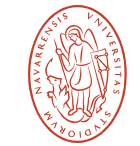
University of Navarra
-
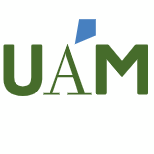
Autonomous University of Madrid
-

Polytechnic University of Catalonia
-

CEU University of San Pablo
-
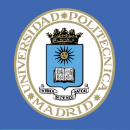
Technical University of Madrid
-

University of Lleida
-
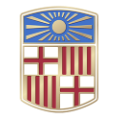
University of Barcelona
-

University of Oviedo
-
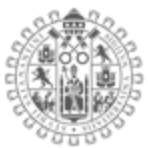
University of Salamanca
-

University of Valladolid
-

Mesoamerican University
-

Istmo University
-

Mariano Galvez University of Guatemala
-

Regional University of Guatemala
-

Galileo University
-

Francisco Marroquín University
-

Rafael Landívar University
-

University of the Valley of Guatemala
-

University of San Carlos of Guatemala
-

Technological Institute of Tlaxcala Plateau
-

Golfo University
-

Technological University of South Sonora
-

Technological University of Huejotzingo
-

Tizimín Institute of Technology
-

Chilpancingo Institute of Technology

